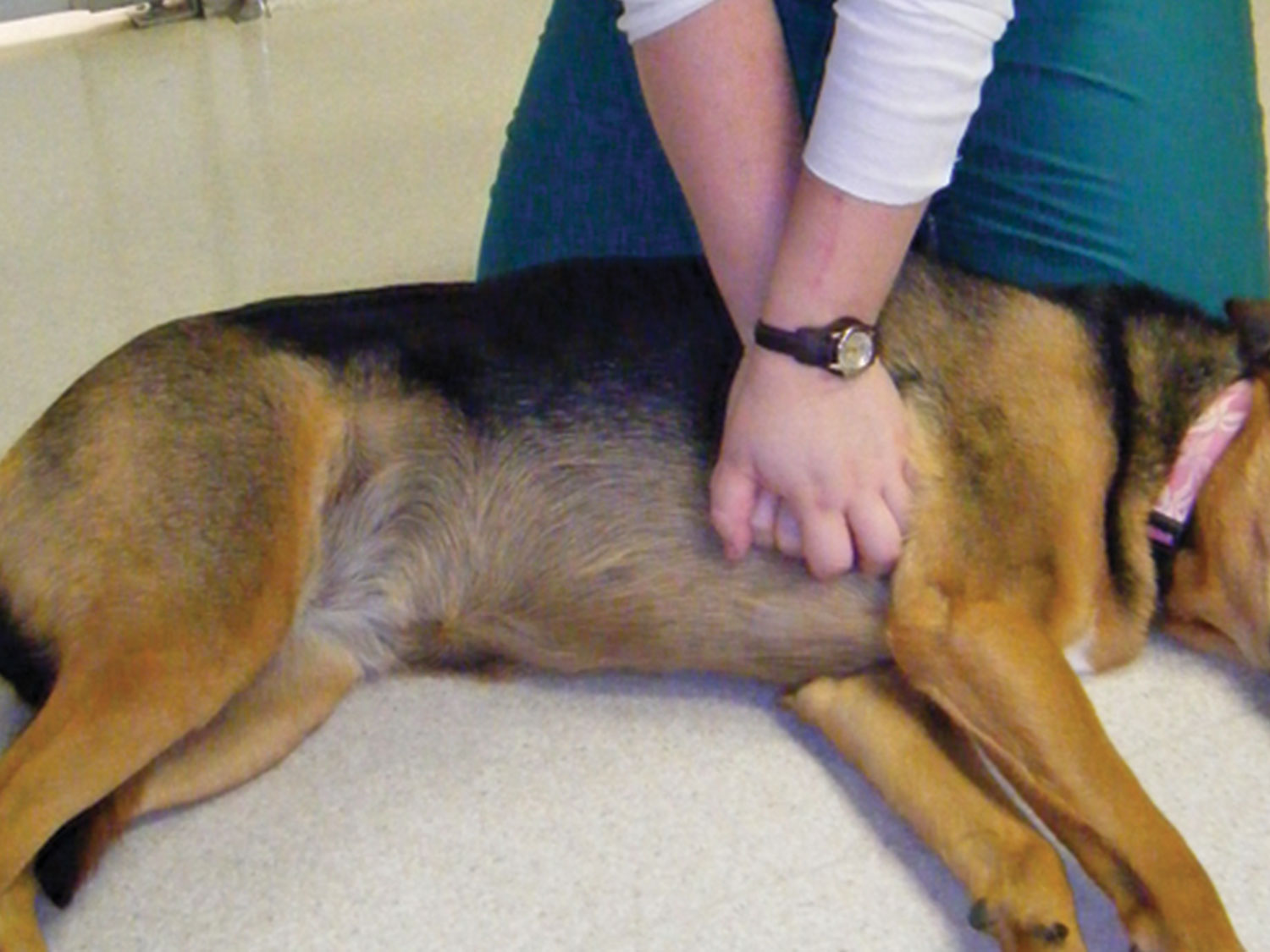


Photos by Dr. Laura McLain & Ready Pet Education
 o you and your staff know what to do in the case of an animal cardiac emergency in your facility? Training on pet first aid and CPR can go a long way in giving the pets in your care the best chance at a good outcome, as well as build your staff’s confidence to act instead of panic.
o you and your staff know what to do in the case of an animal cardiac emergency in your facility? Training on pet first aid and CPR can go a long way in giving the pets in your care the best chance at a good outcome, as well as build your staff’s confidence to act instead of panic.
While fortunately rare, cardiac arrest is one of the scariest events to happen in a pet business—up there with bloat, serious fights and disease outbreak. This article will discuss pet cardiac emergencies as well as how to recognize and provide care to an animal experiencing this type of medical emergency.
Outside of a vet clinic, the most we can do for cardiac arrest is perform high-quality chest compressions, rescue breaths, and get safely and quickly to a vet. Outcomes vary widely and there is no way to know for sure if an animal in cardiac arrest can be resuscitated.
When performing CPR, keep in mind what you are trying to accomplish: the effective compression of the heart to move blood to vital organs. To do this, we need to be sure we are, 1) compressing the correct location on the chest, 2) compressing at the correct rate and depth, and 3) allowing the heart to refill completely between compressions.
- Be sure to keep yourself and others safe. This means moving the animal to a safe area if necessary (out of play groups), using good body mechanics, etc.
- Check for pulse and breathing.
- Once confirmed that there is no pulse and they are not breathing, figure out transportation to a vet. (Do not attempt to provide CPR or first aid while driving. Always wear a seat belt and obey traffic laws. You cannot help any animal in need if you are injured in a car accident!)
- Place hands in the correct position and begin compressions.
- Give rescue breaths.
- Check for a pulse every two minutes.
- Don’t stop CPR until you arrive at the vet, their heart begins beating again or you are too exhausted to continue.


If the animal is not breathing and does not have a pulse, you must figure out a way to get the animal to the vet before starting CPR. If you have no choice but to drive yourself to the vet, postpone CPR in order to drive. It is more important to get to a vet than to perform field CPR. If the animal moves on their own or resists your efforts to help, they do not need CPR. Never perform or practice CPR on an animal that does not need it!


After 30 compressions, give two rescue breaths (detailed below), then return immediately to compressions. Stop every four cycles (or two minutes) to check for a returned pulse. It is unlikely that they will get circulation back from just CPR, but it is possible.
To provide a rescue breath, close the animal’s mouth, cover their nose with your mouth to create a seal and deliver a breath with enough force to see their chest rise and fall. Do not deliver a breath too forcefully.


- Two staff should provide first aid care immediately while other staff clear away the rest of the playgroup or otherwise make the scene safe to work in.
- A manager or senior staff should call the vet clinic that the pet is being taken to in order to warn them of incoming case. Then they should notify the pet’s owner to meet them at the vet.
- While two staff provide first aid care, other staff should pull a car close to the nearest door to the pet. Then the two staff providing care can get in the vehicle and immediately resume care on the way to the vet while someone else drives.
In conclusion, experiencing an animal suffering a cardiac emergency can be frightening. But giving staff training to feel prepared and act in first aid situations can give the pets you care for the best chance at survival and reassure clients that you are well-equipped for caring for their pets should an emergency arise.
***The information contained in this article is for informational purposes and does not substitute veterinary care or advice. Please consult a veterinarian immediately if you think an animal is suffering a medical emergency. This lesson has been shortened for literary format, please consult a professional training program for the most complete information.
Madison Warner is owner of Ready Pet Education & teaches pet first aid & CPR to pet professionals all over the United States. Madison has experience as a vet tech, EMT/firefighter, pet business manager, and FEMA search & rescue K9 handler. Ready Pet Education has been teaching veterinary supervised, comprehensive pet first aid courses since 2018 and offers pet first aid certification designed specifically for pet professionals. We offer online or in-person learning and bulk discounts for 15+ students. We also offer emergency and disaster preparedness consulting for all types of pet businesses. www.readypeteducation.com


